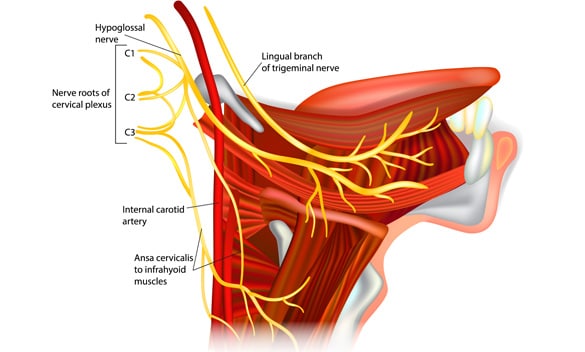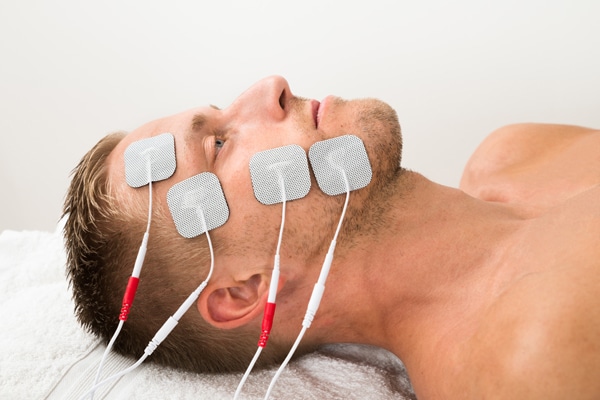Facial Reanimation Surgery

Facial reanimation surgery can provide significant benefits for patients affected by facial paralysis. This type of surgery can help improve the facial muscles’ function, restore natural movement to the face, and improve the overall appearance of the patient’s face.

The Best Candidates for Facial Reanimation

Partial loss of movement

Involuntary facial movement

Total facial paralysis
While facial reanimation surgery can be performed on patients of all ages, the best candidates for the procedure are typically those with paralysis or muscle weakness due to a traumatic injury, cancer, or birth defect. In addition, patients who have had previous facial surgery or radiation therapy may also be good candidates for facial reanimation surgery.
Discuss your goals and expectations with your surgeon to ensure that you are a good candidate for the procedure. Facial reanimation surgery is still a relatively new and emerging field, but it has already helped many patients regain some quality of life.
While this type of surgery can provide excellent results, it is important to note that it is a complex procedure that requires a skilled surgeon. As such, patients should be sure to consult with a plastic surgeon who has experience performing facial reanimation surgery before making any decisions.
Types of Facial Reanimation Techniques
Various types of Facial Reanimation Surgery are available, depending on the cause of the paralysis. Each involves its own benefits.
Muscle Transplant

Muscle Transplant
The most common type of facial reanimation technique is muscle transplant, which involves transferring a muscle from another part of the body to the face. This type of surgery is often used to improve the appearance of a person’s smile or to help them eat and speak more effectively.
Nerve Transfer

Nerve Transfer
Another type of facial reanimation surgery is called nerve transfer. This surgery involves transferring a nerve from another part of the body to the face. This type of surgery can be used to improve the appearance of a person’s smile, as well as their ability to move their facial muscles. It involves transplanting healthy nerves from other parts of the body to the face in order to improve facial movement.
Electrical Stimulation

Electrical Stimulation
Finally, there is also a type of facial reanimation surgery that uses electrical stimulation. This surgery involves implanting electrodes into the facial muscles. The electrodes are then connected to a device that sends electrical signals to the muscles, which helps them to contract and move properly. This type of surgery can be used to improve the appearance and function of all of the muscles in the face.
Recovery Period Post Surgery
Facial reanimation surgery typically takes 3-5 hours to complete. In some cases, you might stay in the hospital for a few days until you have recovered sufficiently for discharge. The recovery from facial reanimation surgery can take several months, and patients must follow a strict post-operative regime to ensure a successful outcome. In some cases, patients may need to undergo physical therapy to regain full use of their facial muscles. However, despite these challenges, facial reanimation surgery can dramatically improve the quality of life for patients with facial paralysis.
Complications of Facial Reanimation
While this type of surgery can be very effective, it is important to be aware of the risks involved. The most common complication after facial reanimation surgery is infection. Other potential complications include:

Bleeding

Nerve damage

Scarring

Wound Infection

Swelling or Numbness
Benefits of Facial Reanimation
The results of Facial Reanimation Surgery can be life-changing for those who are eligible. Some of the benefits include, but are not limited to:

Better ability to eat

Better ability to speak clearly

Improve facial expressions

Helps facial movement

Contact
Dr. James Wang Today

If you're interested in learning more about facial reanimation or any other cosmetic surgery procedure, contact Dr. James Wang today to schedule a consultation. Dr. Wang is a fellowship-trained plastic surgeon with years of experience helping patients achieve their desired results. He will work with you to create a custom treatment plan that meets your needs.
Other Surgical Procedures
FAQs
The outcome of facial paralysis often depends on the cause and severity of the condition. In some cases, facial paralysis may only be temporary and may resolve independently or with treatment. However, in other cases, it may be permanent. See a medical professional if you’re experiencing facial paralysis to determine the cause and the appropriate treatment plan.
This condition has several causes, ranging from viral infections and neurological disorders to injury and trauma. Bell’s palsy, for instance, is a common cause of facial paralysis that occurs when the facial nerves become inflamed or damaged. Other possible causes include Lyme disease, stroke, and tumors affecting the facial nerves. A thorough examination by a medical professional is necessary to determine the specific cause of facial paralysis and develop an appropriate treatment plan.
Lyme disease is a bacterial infection primarily transmitted by ticks. The disease can cause various symptoms, including fever, fatigue, and a distinctive rash. One symptom that people with Lyme disease may experience is facial paralysis, ranging from mild to severe. While not all cases of Lyme disease result in facial paralysis, it is a possibility that should not be ignored.
If you suspect you may have Lyme disease, it is essential to seek medical attention to receive a proper diagnosis and treatment plan. Early detection and treatment can help prevent more severe complications like facial paralysis.
Yes, Dr. James Wang, a facial plastic surgeon, has the expertise to fix nerve damage in the face.
The answer is not cut and dry; some research suggests that facial paralysis can impact certain aspects of vision, such as depth perception and the ability to see clearly in the affected eye. It is because the facial nerves control the muscles responsible for eye movement, meaning that facial paralysis can affect the eye’s ability to function correctly. So while the relationship between facial paralysis and vision is complex, it’s clear that the condition can significantly impact a person’s visual experience.
The success rate of this procedure depends on many factors, including the extent of the damage, the skill of the surgeon, and the patient’s overall health. While it is difficult to provide an exact success rate, many studies have shown that facial reconstruction can be highly effective in improving the appearance and function of the face.
While patients undergo surgery itself under anesthesia, they may experience a level of discomfort and pain during the recovery period. However, with the help of pain management medication and proper post-operative care, patients should be able to manage the pain and discomfort effectively.
While most surgeries have risks and potential complications, numerous studies have shown that facial reconstruction surgery is generally safe when performed by a skilled and experienced surgeon.
Scars are a common concern during preoperative; skilled surgeons ensure minimal scarring by making incisions within the natural creases or hairline. The extent of scarring depends on the individual’s healing process and the severity of the condition.



